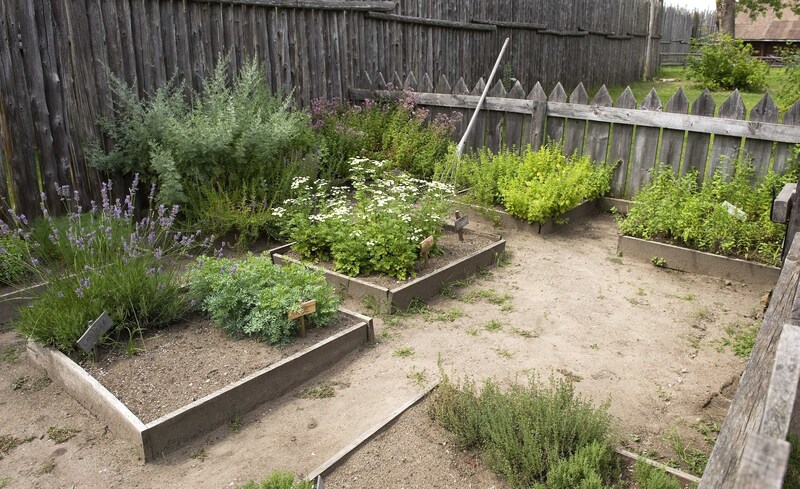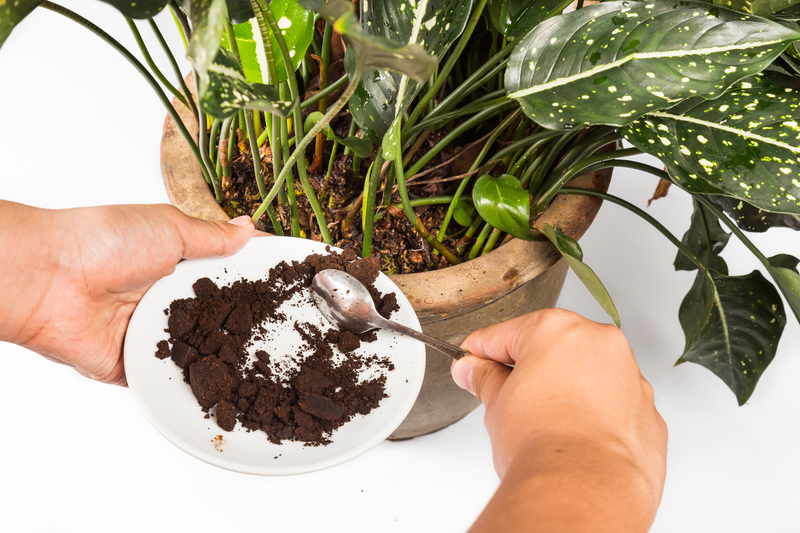Prepare Your Garden for the Challenges of Severe Weather
Posted on 16/06/2025
Prepare Your Garden for the Challenges of Severe Weather: A Complete Guide
Weather extremes are becoming the new norm, putting your precious garden at risk. Whether it's fierce winds, heavy rain, scorching heat, droughts, or sudden frosts, knowing how to prepare your garden for severe weather can make all the difference. Not only will it save you time and money, but it can also ensure your green haven flourishes in even the toughest conditions. In this detailed guide, we'll cover all you need to know to weatherproof your garden for every season.
Understanding Severe Weather Threats: Why Garden Preparation Is Essential
Severe weather can devastate unprepared gardens. In recent years, gardeners worldwide have faced:
- Droughts that sap the life from soil and plants
- Floods leading to root rot and soil erosion
- Strong winds that topple plants, trees, and structures
- Hailstorms that shred leaves and ruin crops
- Sudden cold snaps or frosts that kill tender plants
- Heatwaves causing scorching and dehydration
With such unpredictable trends, it's clear that taking steps to protect your garden from severe weather is no longer optional -- it's essential.

1. Assessing Your Garden's Vulnerabilities
To prepare your outdoor space for severe weather, start by identifying what makes your garden vulnerable. Ask yourself:
- Is your garden situated in a flood-prone area?
- Do you have sloped land susceptible to runoff?
- Which plants are most sensitive to wind, drought, or frost?
- Are trees or shrubs overgrown and likely to break in storms?
A proper assessment forms the backbone of any effective garden storm-proofing plan.
2. Fortifying Garden Structures Against Storms
Secure Fences, Sheds, and Raised Beds
- Tighten fence posts and reinforcing panels to resist strong winds.
- Ensure that sheds, greenhouses, and storage units are firmly anchored to the ground.
- Use heavy-duty materials for raised beds, and check for rot at the base.
Stabilize Large Plants and Trees
- Stake young trees and vulnerable top-heavy plants.
- Prune dead or weak branches to reduce wind resistance.
- Call a certified arborist to inspect mature trees near your home.
Well-maintained trees withstand storms better and pose less risk to surrounding structures.
3. Soil Care: Building Resilient Foundations
Healthy soil is the foundation for a weather-resilient garden. Here's how to boost your soil's ability to withstand harsh conditions:
- Add organic matter - compost, leaf mold, or well-rotted manure to improve drainage and water retention.
- Use mulch to stabilize soil temperature, lock in moisture, and reduce erosion.
- Test your soil's pH and nutrient levels at least once a year and amend as required.
- Plant cover crops in autumn to prevent winter washouts.
Your soil's health is crucial to your garden's ability to survive droughts and floods alike.
4. Water Management: Drought-Proofing and Flood Prevention
Conserving Water During Drought
- Install drip irrigation systems to deliver water directly to roots where it's needed most.
- Collect rainwater in barrels for use during dry spells.
- Group plants with similar water needs together to avoid waste.
- Apply mulch thickly (2-4 inches) to hold soil moisture for longer periods.
- Water deeply and less often to encourage deeper root growth.
Preparing for Heavy Rain and Flooding
- Direct downspouts and runoff away from beds using gravel-filled trenches or swales.
- Grow deep-rooted species that can anchor soil and reduce erosion.
- Create raised beds in low-lying gardens to enhance drainage and safeguard plant roots.
Smart water management is at the heart of prepping your garden for any type of extreme weather.
5. Plant Selection: Choosing Weather-Resilient Varieties
To effectively storm-proof your garden, select plants that are proven to be tough and adaptable:
- Choose native plants that are naturally acclimated to your local climate and soil.
- Incorporate drought-tolerant perennials like lavender, yarrow, and sedum for dry conditions.
- Opt for flood-tolerant species such as willows, marsh marigold, and sedges in wetter regions.
- Research frost-hardy vegetables and flowers for areas with unpredictable cold snaps.
- Mix annuals and perennials to increase resilience and biodiversity.
This diversity makes your garden more likely to recover from a single damaging event.
6. Protecting Plants from Wind, Hail, and Storms
Windbreaks and Barriers
- Plant dense hedges (like boxwood or privet) at garden peripheries to slow and filter wind.
- Use woven fences or screens where natural windbreaks aren't possible.
- Temporary netting or burlap wraps can safeguard delicate shrubs ahead of an expected storm.
Shielding Against Hail and Heavy Rains
- Keep a stash of garden cloches, plastic tunnels, or floating row covers to deploy at short notice.
- Install strong, supportive cages or trellises for tomatoes, beans, and climbing plants.
- Move potted plants under shelter (porch, awning, or indoors) during severe hail or downpours.
7. Frost and Cold Snap Readiness
- Monitor weather forecasts closely as seasons change.
- Apply a deep layer of mulch around roots just before frosts to insulate the soil.
- Cover sensitive plants with horticultural fleece or old blankets secured with stakes or rocks.
- Bring containers and tender plants inside or into a greenhouse when prolonged cold threatens.
A little planning can mean the difference between a thriving garden and a spring full of disappointment.
8. Summer Heatwaves: Shielding Your Garden from Scorching Temperatures
- Water plants early in the morning or late evening to reduce evaporation loss.
- Set up temporary shade structures ("shade cloths" or old sheets) to provide relief at midday.
- Opt for light-colored mulches (like straw) to reflect more sunlight and keep roots cooler.
- Group pots tightly together to create a cooler microclimate around them.
9. Emergency Plans for Sudden Extreme Weather Events
Sometimes, you'll have only hours or even minutes to react:
- Keep a digital and paper list of supplies (netting, stakes, fleece, mulch) and where they're stored.
- Create an "emergency kit" with basic tools and fasteners within easy reach.
- Practice quickly assembling storm covers or shelters before an actual emergency.
- Review government and local emergency alerts regularly for updates on imminent threats.
Readiness saves precious time and minimizes losses when disaster strikes unexpectedly.
10. Recovery and Regrowth: After Severe Weather Hits
- Inspect your garden as soon as it's safe -- look for structural damage, broken branches, and endangered plants.
- Remove debris promptly to prevent harboring pests or diseases.
- Prune and trim damaged plants with clean, sharp tools.
- Check soil saturation and drainage -- aerate compacted soils if needed.
- Minimize walking on soggy ground to avoid soil compaction.
- Apply natural fertilizers to encourage fast recovery.
Remember: many plants are more resilient than they look. With attentive care, they can bounce back even after dramatic weather events.
Other Tips to Prepare Your Garden for the Challenges of Severe Weather
- Regularly update your garden layout and "hazard map" as new challenges emerge.
- Community gardening groups and local extension offices are valuable sources of regional advice.
- Document your plans and losses to learn from each season's unique weather pattern.
- Keep an eye on new tools, technologies, and plant varieties designed for climate resilience.

Conclusion: Strong Gardens Stand the Test of Time
Severe weather is inevitable, but garden devastation is not. By preparing your garden for the challenges of severe weather, you future-proof your landscape and invest in its continued beauty, productivity, and enjoyment. Proactive planning, resilient plant choices, and a few smart safeguards can make your garden tough enough to weather any storm.
Ready to start? Assess your risks, make a checklist, gather supplies, and take one step at a time. With these strategies, your garden can withstand drought, floods, frost, and more -- and come back greener every season.
Further Reading & Resources
- Royal Horticultural Society: Preparing Your Garden for Extreme Weather
- University Extension: Storm and Weather Preparedness for Gardeners
- National Gardening Association: Protecting Your Garden from Weather Extremes
Stay informed, stay ready, and your garden will thrive no matter what the weather brings!
```
